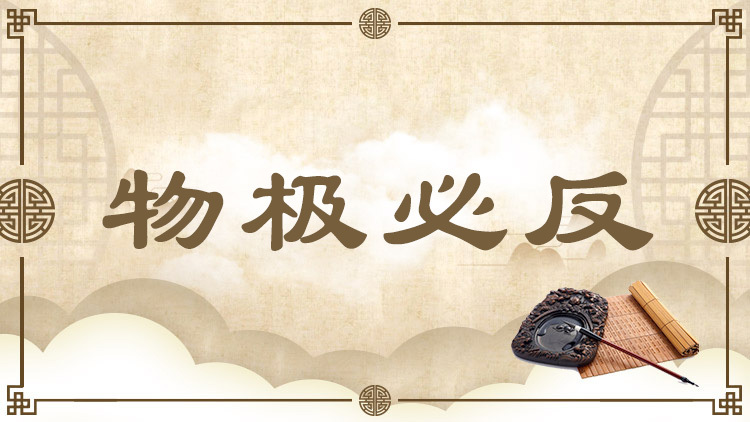When Reaching an Extreme, Things Are Bound to Revert to Their Opposites

事物到达某一极端必然会向其反面转化。古人很早就认识到,事物的属性或状态总会在一定情况下向与自身相反的对立面转化。北宋的程颐(1033—1107)则对这一事物变化的规则作出了更细致的描述,提出了“物极必反”之说。“物极必反”揭示的是事物在属性或状态上发展到极端时的变化趋向。事物在极端状态下,其属性或状态的反向转变是必然发生的。
The ancient Chinese came to know early that the nature or state of things change to their opposite under certain circumstances. In the Northern Song Dynasty, Cheng Yi (1033-1107) gave a detailed description of the rules of such change when he argued that "when reaching an extreme, things are bound to revert to their opposites." This view believes that things tend to change when reaching an extreme in their nature or state. In such a state, things inevitably transform themselves into their opposite.
引例 Citation:
◎物极必返,其理须如此。有生便有死,有始便有终。(《二程遗书·入关语录》)
事物到达极端就必然向其反面转化,事物的道理就是这样。有生便会有死,有开始就会有终结。
When reaching an extreme, things are bound to revert to their opposite state. This is the way things work. When there is life, there is death, and when there is a beginning, there is an end. (Writings of the Cheng Brothers)
推荐:教育部 国家语委
供稿:北京外国语大学 外语教学与研究出版社
责任编辑:钱耐安





